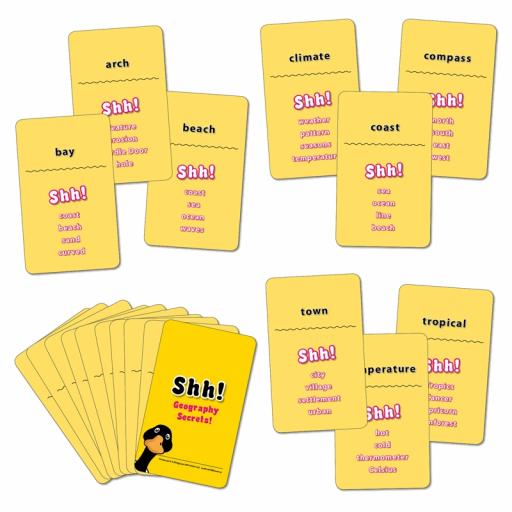Effective classroom management is crucial for creating a positive learning environment. The following comprehensive guide outlines the top strategies for maintaining discipline, fostering engagement, and ensuring a smooth flow of activities in the classroom. Implementing these methods will not only enhance the learning experience but also support teachers in managing their classrooms efficiently.
1. Establish Clear Expectations
From the outset, it's vital to establish clear expectations for behavior and academic performance. Students should understand what is expected of them in terms of respect, participation, and assignment completion. Clearly defined rules and procedures can prevent misunderstandings and set a standard for acceptable conduct.
Set Specific Rules
Create a list of specific, understandable rules that cover key areas such as:
- Respect for Others: Emphasise the importance of listening when others speak and treating everyone with kindness.
- Classroom Procedures: Outline procedures for common activities like entering the classroom, turning in homework, and group work.
- Consequences and Rewards: Make sure students know the consequences of breaking rules and the rewards for following them.
2. Develop a Routine
A structured routine helps students know what to expect and reduces uncertainty. Consistent daily routines can significantly enhance time management and minimise disruptions.
Morning Routine
Begin each day with a predictable morning routine that might include:
- Welcome Activities: Engage students with a brief activity as they enter the classroom.
- Attendance and Announcements: Quickly take attendance and share any important news or reminders.
- Review of the Day’s Agenda: Provide a brief overview of what will be covered during the day.
3. Positive Reinforcement
Positive reinforcement is a powerful tool in classroom management. Recognising and rewarding good behavior encourages students to continue behaving appropriately.
Types of Positive Reinforcement
- Verbal Praise: Acknowledge students' efforts and achievements verbally.
- Classroom Rewards: Implement a system where students can earn points or tokens for good behavior, which can be exchanged for privileges or small prizes.
- Public Recognition: Highlight students' successes in front of the class to build a supportive classroom community.
4. Build Strong Relationships
Building strong relationships with students is essential for effective classroom management. When students feel respected and understood, they are more likely to engage positively.
Get to Know Your Students
- Personal Interests: Learn about your students’ interests, hobbies, and backgrounds.
- One-on-One Time: Spend time with students individually to build rapport and show that you care about their success.
- Active Listening: Practice active listening to understand students' concerns and needs.
5. Effective Communication
Clear and effective communication is key to managing a classroom successfully. Ensure that your instructions and feedback are easily understood by all students.
Strategies for Effective Communication
- Be Clear and Concise: Use simple language and short sentences to convey your message.
- Non-Verbal Cues: Utilise body language, facial expressions, and gestures to reinforce your verbal messages.
- Feedback: Provide constructive feedback that focuses on specific behaviors and offers solutions for improvement.
6. Classroom Layout and Environment
The physical layout and overall environment of the classroom can impact student behavior and learning. A well-organised and stimulating classroom promotes a positive atmosphere.
Optimise the Classroom Layout
- Seating Arrangements: Arrange desks to facilitate interaction and collaboration among students.
- Accessible Resources: Ensure that materials and resources are easily accessible to minimise disruptions.
- Visual Aids: Use posters, charts, and other visual aids to create an engaging learning environment.
7. Proactive Classroom Management
Proactive strategies anticipate and prevent disruptive behavior before it occurs. By being proactive, teachers can maintain control and create a positive learning environment.
Proactive Techniques
- Anticipate Problems: Identify potential issues and address them before they escalate.
- Monitor Behavior: Continuously observe students and provide immediate feedback.
- Preventive Measures: Implement measures such as seating plans or quiet signals to preempt disruptions.
8. Engage Students Actively
Active engagement keeps students focused and reduces opportunities for misbehavior. Interactive lessons and activities promote involvement and interest in learning.
Engagement Strategies
- Interactive Lessons: Incorporate discussions, group work, and hands-on activities into your lessons.
- Variety of Teaching Methods: Use different teaching methods to cater to various learning styles.
- Student-Centered Learning: Encourage students to take an active role in their learning through projects and presentations.




9. Addressing Misbehavior
When misbehavior occurs, it's important to address it promptly and fairly. Consistent and fair discipline helps maintain order and respect in the classroom.
Handling Misbehavior
- Immediate Response: Address minor disruptions quickly to prevent escalation.
- Consistent Consequences: Apply consequences consistently to all students to ensure fairness.
- Restorative Practices: Use restorative practices to help students understand the impact of their behavior and make amends.
10. Reflect and Adjust
Regular reflection and adjustment of classroom management strategies are necessary for continuous improvement. Reflect on what works well and what needs modification.
Reflection Techniques
- Self-Assessment: Regularly assess your own practices and their effectiveness.
- Student Feedback: Gather feedback from students to understand their perspectives.
- Peer Observation: Observe and learn from colleagues to discover new strategies.
Effective classroom management involves a combination of clear expectations, positive reinforcement, strong relationships, effective communication, a conducive classroom environment, proactive strategies, active engagement, fair discipline, and ongoing reflection. Implementing these strategies will create a supportive and productive learning environment for all students.





























